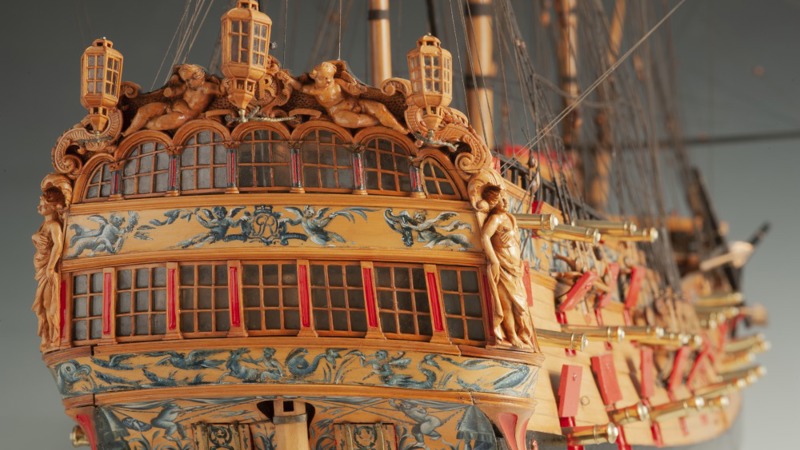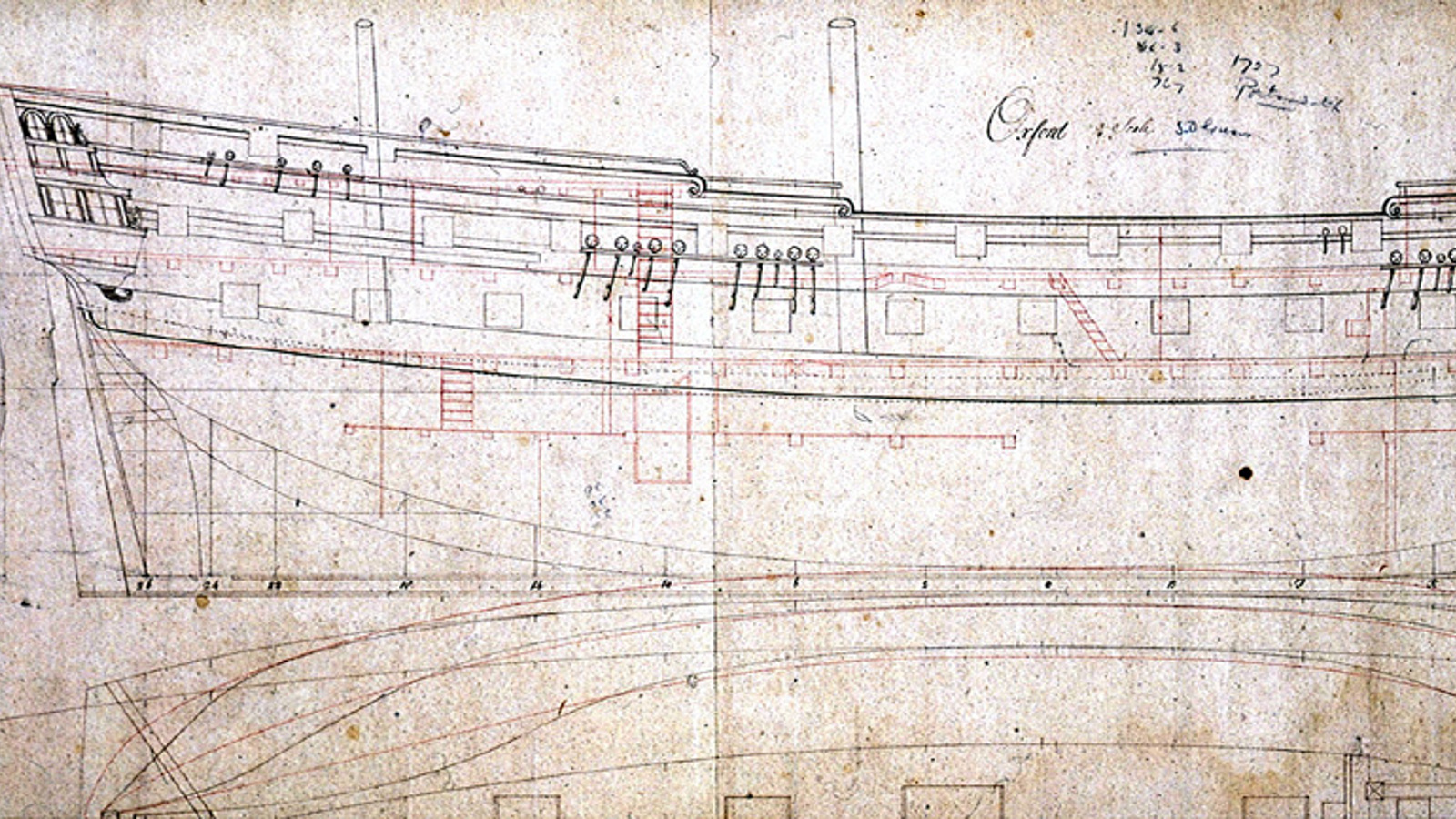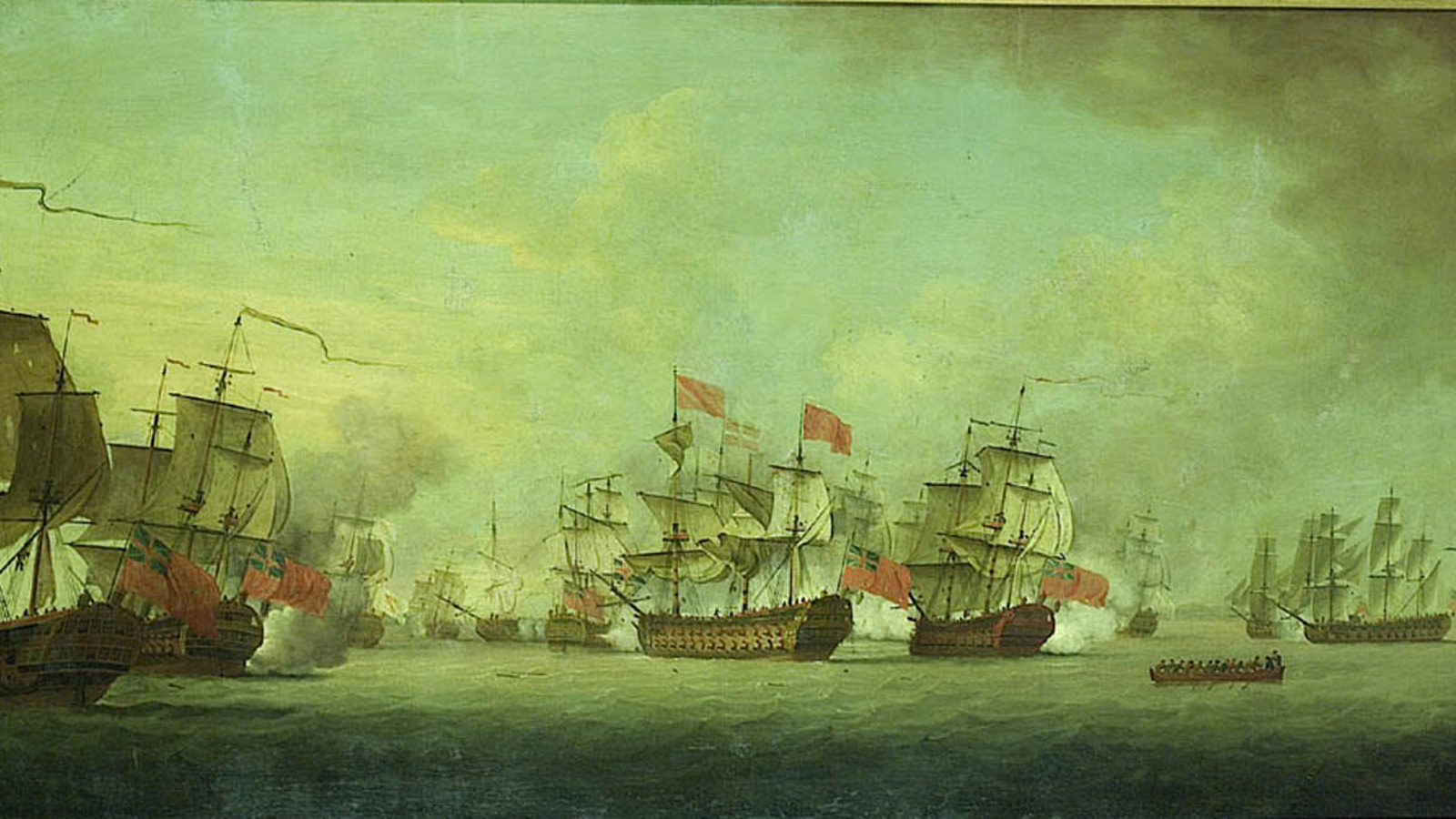Both Spanish merchant ships and naval vessels were fair game for the British and HMS Oxford saw action against both. Among the merchant ships it engaged were the St Rosalia which it captured off Lisbon in 1739 and the Anna Maria y San Felix which it captured in the West Indies in 1748. It took part in the attempts to capture of the large Spanish warship Glorioso in 1747 and it was in the British Caribbean squadron which attacked the Spanish navy at Havana in October 1748.
The Navy and Slavery

Model of HMS Oxford (detail)
1877.70
Images © CSG CIC Glasgow Museums Collection
6th November 2019
One of the earliest ship models to enter the collection of Glasgow Museums was a fine model of HMS Oxford, made around 1727. It came from the collection of Robert Napier, known as the ‘father of Clyde shipbuilding’ and was presented shortly after his death in 1876 as an example of early naval ship design. However, beneath the beauty and intricacy of this model lies a darker history.
The Royal Navy’s role has always been to police and protect British interests around the world. In the eighteenth century this meant that it played a major part in protecting the transatlantic slave trade and the British slave economy in the West Indies. HMS Oxford was one of those vessels used for this task.

Model of HMS Oxford
1877.70
Images © CSG CIC Glasgow Museums Collection
HMS Oxford was originally built in Bristol in 1674 but was taken apart and rebuilt in 1727 as a 50-gun fourth rate warship. It was a medium sized warship that was powerful enough to engage a sizeable enemy, but small enough to carry out escort and cruising duties.
Britain’s principal opponent at this time was Spain, whose interests in South America and the Caribbean threatened Britain’s territorial and trading ambitions. By the 1730s Britain and Spain were engaged in a bitter struggle for supremacy over the slave economy, which broke into open warfare in the 1740s. After its refit HMS Oxford was initially stationed off the African coast but it then spent much of its time with the British fleet in the West Indies.


After the abolition the Atlantic slave trade in 1807 the Royal Navy played a crucial role in its suppression. The model of HMS Oxford provides a reminder of the time when Britain encouraged the slave trade and the institutions of state like the Royal Navy were used to protect and support it.
Dr Martin Bellamy,
Research & Curatorial Manager
For more information on our ship models see: https://www.pen-and-sword.co.uk/Glasgow-Museums-The-Ship-Models-Hardback/p/16736
